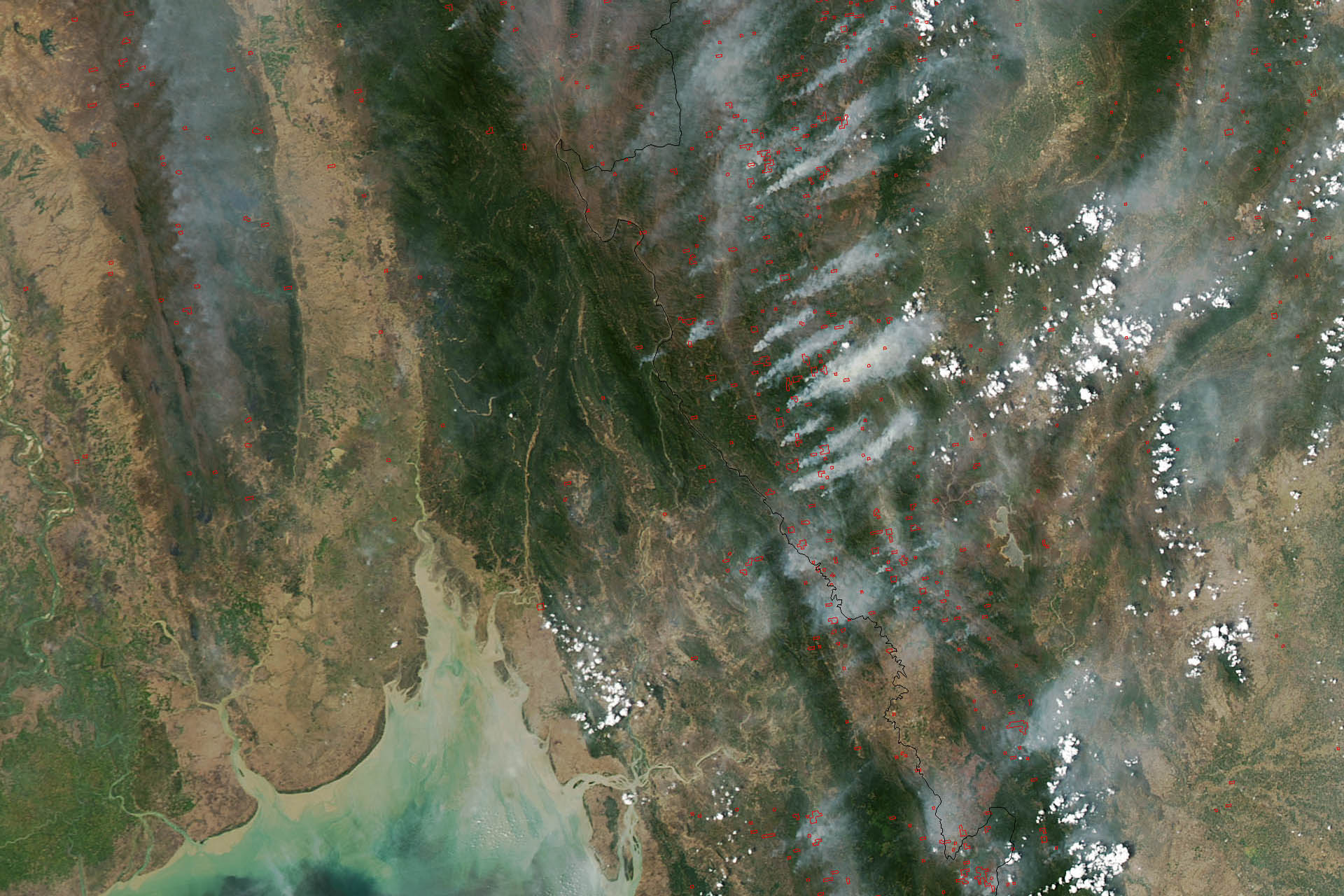
The skies above Southeast Asia are often dimmed by a persistent haze, due largely to high concentrations of aerosols emitted from fires set intentionally to clear forests for oil palm plantations, burn agricultural waste or serve some other human need. The forest-clearing fires are of particular concern, as most occur on peatland, which burns longer and generates more smoke than other biomass sources. The high aerosol concentrations that result from such fires degrade air quality and human health, reducing the quality of life for the general public and challenging local governments to take corrective action.
A first step in this direction is to assess the scope of the problem. Now a new paper in Atmospheric Chemistry and Physics by researchers with the MIT Joint Program on the Science and Policy of Global Change quantifies how much fire aerosols have impacted visibility and air quality in Southeast Asia between 2003 and 2014. The paper is the first study to use long-term, observed visibility data to investigate the impact of fire aerosols on air quality across the region.
Defining visibility as “the farthest distance at which one can see a large, black object against a bright background at the horizon,” the researchers found that during the ten-year period studied, fire aerosols were the sole cause of almost all very low-visibility (less than seven kilometers) events, and a significant fraction of low-visibility (less than 10 kilometers) events in the region’s major metro areas (up to 39 percent in Bangkok, 36% in Kuala Lumpur and 34% in Singapore).
The study also determined that “high-exposure days” (HEDs)—annual exposure days to low-visibility caused by particulate matter pollution—increased throughout the decade in all 50 cities in the Association of Southeast Asian Nations (ASEAN), regardless of population size, with fire aerosols contributing up to nearly 50 percent of particulate pollution.
Any health impacts due to fire aerosols are likely to be widespread in Southeast Asia. At least 30 million people living in the top four cities for HEDs—Jakarta, Bangkok, Hanoi and Yangon—have experienced more than 200 low-visibility days (LVDs) per year due to particulate pollution over the past decade, and more than half of those LVDs stemmed primarily from fire aerosols.
“We find that a very large proportion of the population of Southeast Asia has been exposed to relatively persistent hazy conditions,” says Hsiang-He Lee, the lead author of the study and a postdoctoral associate in the research group of fellow co-author Chien Wang, a senior research scientist at the MIT Joint Program and Department of Earth, Atmospheric and Planetary Sciences. Rotem Z. Bar-Or, another postdoctoral associate in Wang’s group, also contributed to the study. “Our results suggest that in order to improve the air quality in Southeast Asia, in addition to reducing or even prohibiting planned and unplanned fires, mitigation policies will also need to target non-fire pollution sources.”
To obtain their findings, the researchers coupled surface visibility and particulate matter concentration (PM2.5) observations with decade-long (2003-2014) simulations using a modified version of the Weather Research and Forecasting (WRF) model that accounts for fire aerosol particles. This modified “fire tracer” model enabled the researchers to identify which low-visibility events were caused by fire aerosols.
The study was funded through the Singapore-MIT Alliance for Research and Technology (SMART) Center for Environmental Sensing and Modeling (CENSAM) by the National Research Foundation of Singapore under its Campus for Research Excellence and Technological Enterprise (CREATE) program; and the U.S. National Science Foundation, Department of Energy and Environmental Protection Agency.
Photo: This image of fires burning throughout Burma (Myanmar) and Thailand was acquired on March 22, 2013, by the Moderate Resolution Imaging Spectroradiometer (MODIS) on NASA’s Aqua satellite. MODIS detects fires not from visible smoke plumes, but from thermal infrared energy radiating from the land surface. The heat is invisible in images like this, but the locations where MODIS detected fires are labeled with red dots. (Source: NASA)

